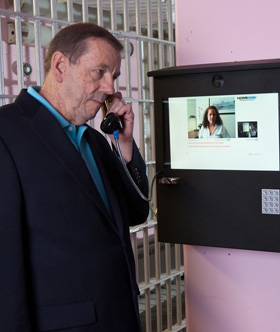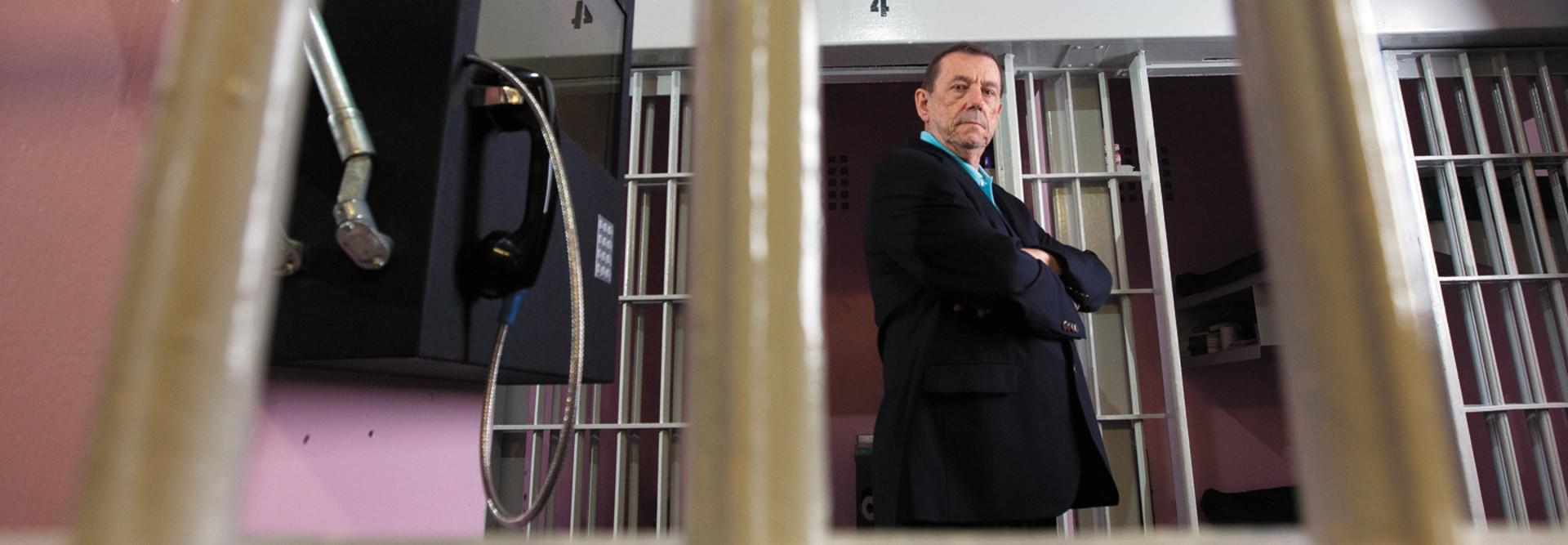HomeWAV Video Conferencing Enables Jail Visitation as a Service
Family and friends of inmates face many obstacles in visiting their loved ones. Scheduling, travel, wait times, security lines and age restrictions all add to the stress of an already difficult situation. Jail visits also impose an administrative burden on detention facilities.
These difficulties inspired Gary Humphries to use his background in video conferencing to launch HomeWAV, a web-based video visitation program. Barely a year old, the Virginia Beach, Va., company has kiosks in jails in Kansas, South Carolina, Tennessee, Texas, Virginia and Washington, with agreements in the works for more installations.
One of HomeWAV’s first clients was the Finney County Sheriff’s Office in Garden City, Kan., which installed kiosks in January. Jail administrators there have noticed the video conferencing initiative boosts inmate morale.
“The inmates have really enjoyed it because it gives them much more flexibility in their visitations,” says Technical Administrator Lt. Robert Hahn. “Rather than being restricted to a couple of visits a week at a certain time period, this pretty much opens it up to them from 8 a.m. to 10 p.m. every day.”
How HomeWAV Visits Work
Similar to a pay phone, the HomeWAV system packages a computer, screen, handset and keypad in a black metal box mounted on the wall. The solution includes Acer Veriton Atom D425 1.8 gigahertz netbooks with Acer 19-inch LCD screens protected by a sheet of Plexiglas, along with a Logitech web camera. USB connections link the webcam and keypad, while the handset connects to the netbook with a stereo audio jack. Visitors need a high-speed Internet connection, Adobe Flash, a microphone and a webcam.
Anyone who wants to keep in touch with an inmate can set up an online account and purchase time at 50 cents a minute. “You log in and go about your business at home,” Humphries says. “[The inmates] have all day, unless there’s something going on.”
When visitors are logged in, the HomeWAV unit indicates their availability by displaying a green light next to the inmate’s name. Inmates who are allowed to accept visitors initiate the video call. Jails set their own maximum call times; however, inmates usually can participate in multiple calls each day. Some institutions also use HomeWAV kiosks for lobby visits. In both cases, no security personnel are required.
The system is fairly simple compared with a traditional in-person visit, explains Humphries. When visiting in person, one usually has to schedule a visit at least 24 hours in advance, and then may have to wait a substantial amount of time while going through the jail’s security to the visitation room, where visits are often conducted via video link.
Then, if there’s a spot inspection or prisoners are being moved, the jail goes into lockdown. “If you had anything scheduled, too bad,” Humphries says. “Come back the next day or reschedule. So the beauty of our system is that you just call later.”
A Simple But Effective Operation
The HomeWAV client runs on Windows, and the servers run on Linux. All video calls can be recorded and archived on HomeWAV’s servers for 60 days, relieving jails of having to maintain servers and perform software updates. “Initially, it was weird for me not to have a server,” Lt. Hahn says. “But that’s one less piece of equipment I have to worry about.”

Photo: Khue Bui
“If you had anything scheduled, too bad. Come back the next day or reschedule. So the beauty of our system is that you just call later,” says HomeWAV's Gary Humprhies.
Ben Simon, owner of Ideas2Executables in Arlington, Va., and HomeWAV’s programmer-consultant, says, “We try to find that balance between putting things in-house while minimizing the specialized requirements. The majority of this runs on off-the-shelf servers, which helps with the scalability perspective.”
HomeWAV has partnered with integrators in 50 states, plus Puerto Rico and Canada. The system runs on a profit-sharing model, in which HomeWAV provides the kiosk unit at no charge and shares a portion of the revenue with the jail, depending on the complexity of the rollout.
Originally, HomeWAV was designed for a minimum 10-minute call, but one moment during a test run made Humphries change his mind and offer one-minute increments. “I saw a little girl giving her father a kiss goodnight, and I threw everything out the window,” he says. “When you live 120 miles away from a jail and your kid can say goodnight every night, you can’t beat that.”
HomeWAV Used to Expedite Arraignments
The Lewis County Sheriff’s Office in Chehalis, Wash., deployed a HomeWAV unit in the Lewis County Jail in June. Since then, 46 percent of the inmate population has signed up, says Lt. Jim Pea.
“They get more time than with the previous onsite visits,” Lt. Pea says. “We restrict access to our facility to people 18 years old and above, which means they couldn’t have children come in. So that’s a tremendous change for them. They can even visit with their animals, which they do.”
Lewis County also found an innovative way to use the system: for video court arraignments. Transporting inmates from jail to court was absorbing too many resources, says Pea, and the county was looking for a new approach. With HomeWAV, inmates will interact with the county’s two largest municipal courts using a separate HomeWAV kiosk within the jail.
“The cities were using a good portion of their police departments on the days they had municipal court just to operate the court and have security there,” Lt. Pea says. “It’s going to be a tremendous cost and efficiency savings to those cities.”
Next up for HomeWAV is a migration to thin client systems and smartphone access. HomeWAV’s technical assistant, Hunter Manson, is testing new hardware with the aim of moving to a fully Linux-based environment. “The big tech hurdle is how to be cost-effective with the hardware we buy, but keep things small and still able to perform to the excellence of the service we provide,” Manson says.
Humphries hopes HomeWAV will help maintain the bonds between inmates and their families and reduce rates of recidivism.
“[Jail administrators] talk about keeping families connected when they’re in jail,” Humphries says. “If you don’t, guess what? Their new family is the jail, and they’re going back. So if you keep them connected, you stand a better chance of them not returning.”








